Aren’t you intrigued by a Western-style house on the lower slope of Tenno-zan (天王山) (Tenno Mountain), blending in with nature in the south of Kyoto? This house used to be a villa built by a wealthy businessman, but now, it is open to the public as a museum with its surrounding gardens. I would like to introduce this unique museum to you.
Location
The museum is halfway between Kyoto and Osaka. If you take the JR Kyoto Line, get off at Yamazaki (山崎) Station; if you take the Hankyu Kyoto Line, get off at Ōyamazaki (大山崎) Station. Shuttle buses are available from either station. You can walk there in about 15 minutes, but bear in mind that the slope is steep as it goes halfway up Tenno-zan.
On a side note, Tenno-zan is most famous for being the site of the Battle of Yamazaki in 1582, a pivotal moment in Japanese history, where Toyotomi Hideyoshi defeated Akechi Mitsuhide. Today, this 270-meter-high mountain offers several hiking trails that attract visitors, including those interested in its historical background.
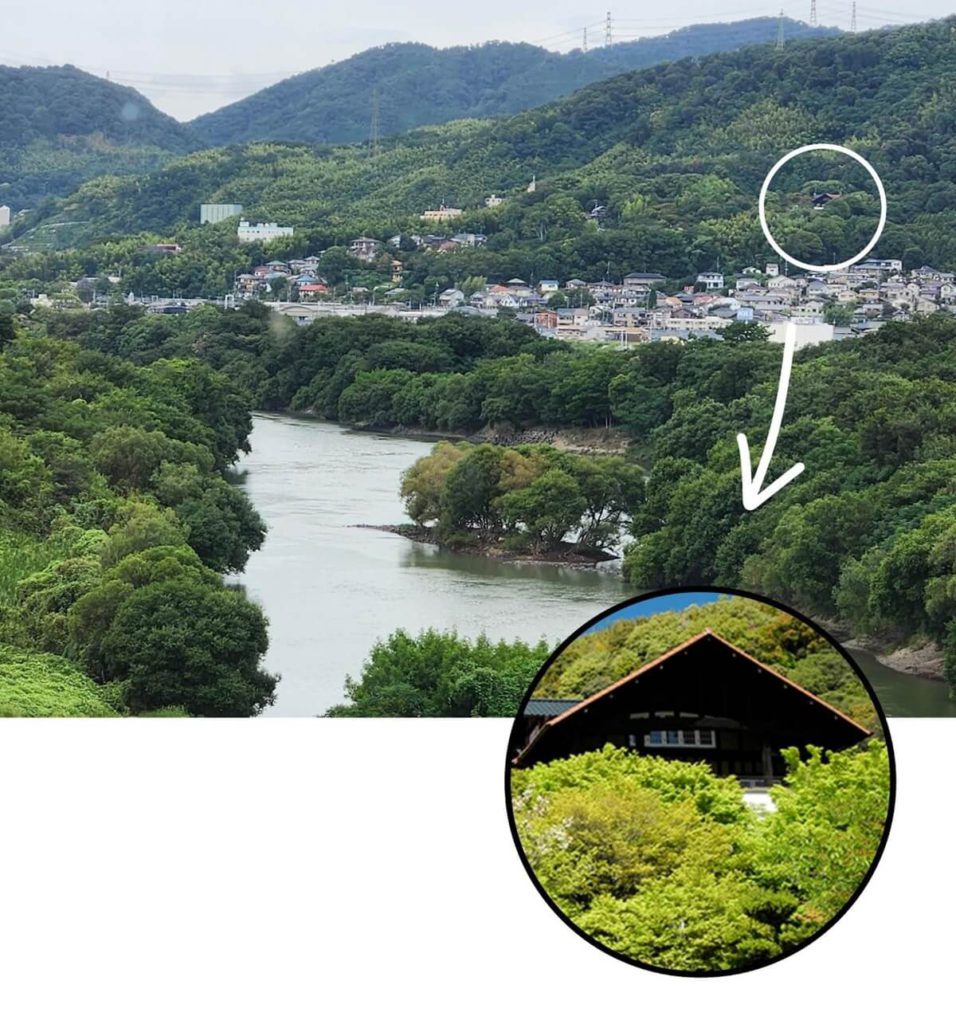
Preface
Let me start by explaining the backstory of the villa. This English-style building in the middle of the forest was originally built as a villa in the 1910s by Shotaro Kaga (加賀正太郎 1888-1954). Kaga visited Europe in his youth and was fascinated by its culture. He visualized the view of the River Thames from Windsor Castle in England and decided to build a villa on the site of Ōyamazaki Town. It took him 20 years to complete the villa. It was called the Ōyamazaki Villa, with all roads, buildings, gardens, and tree planting designed by Shotaro Kaga himself. Several years after his death, the villa was to be demolished, but citizens desired to preserve it, as it was a valuable example of unique Western-style architecture. With the support of Kyoto Prefecture, Ōyamazaki Town, and the Asahi Beer Corporation, which Kaga was connected with, the building was restored and then opened as an art museum in 1996. Now, it is officially named Asahi Group Ōyamazaki Villa Museum of Art.
Architectural Harmony
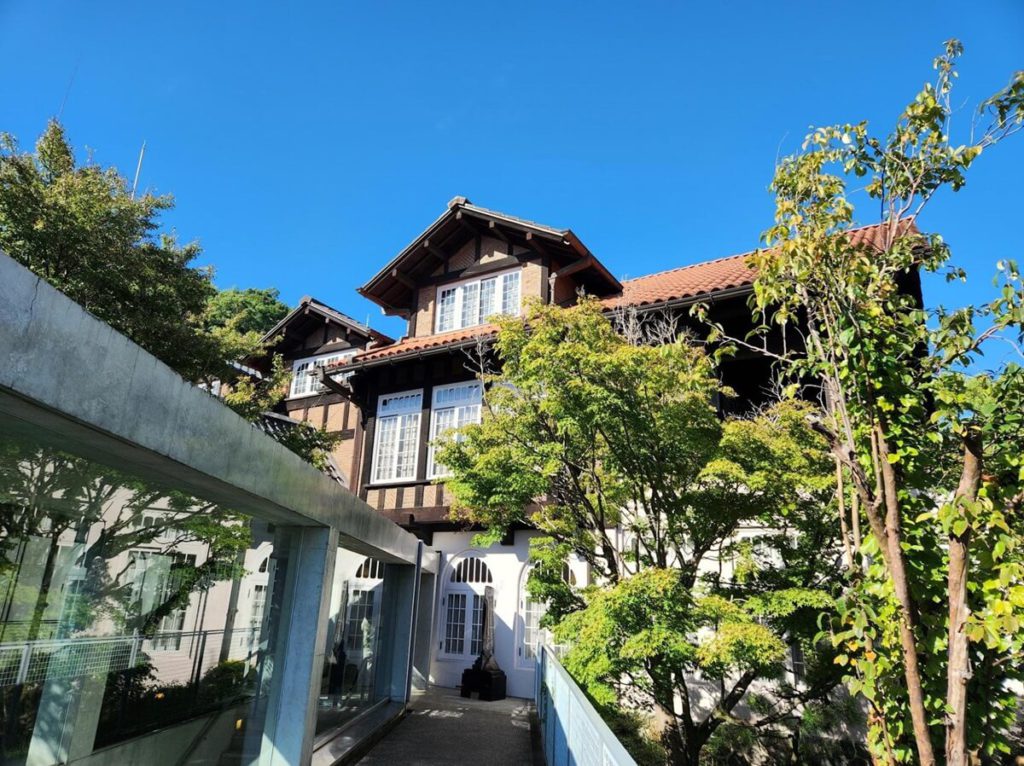
The Ōyamazaki Villa Museum of Art currently consists of three buildings: the original Ōyamazaki Villa (本館), the Underground Jewelry Box (地中の宝石箱), and the Dream Box (夢の箱). Each of these buildings plays a significant role in the museum’s character and is connected by a glass corridor, creating a unique architectural blend of classic and modern elements.
◆Ōyamazaki Villa / Main Building
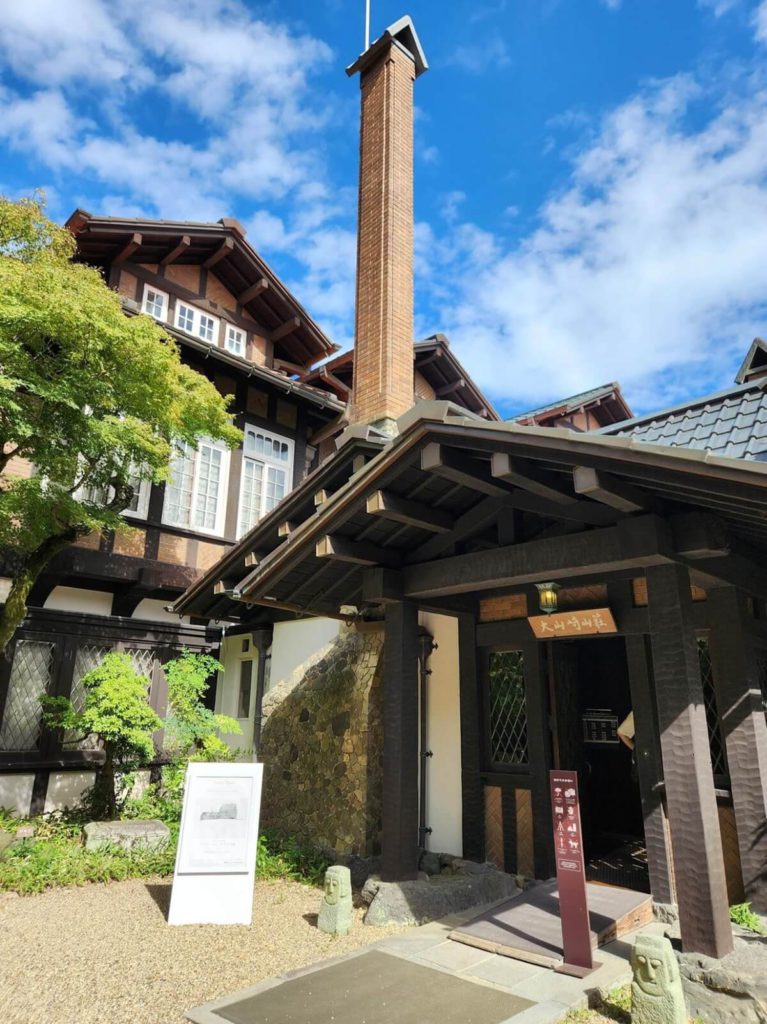
The exterior incorporates the half-timber construction method of the British Tudor Gothic style, with exposed pillars on the exterior and brick walls between them. The interior is impressive for its warm and stately furnishings, including a fireplace, stained glass windows, stairs, and an antique music box, which plays every hour. On the terrace on the second floor, visitors can enjoy delicious tea and sweets while admiring the spectacular view of the surrounding nature, including the Yodo River below.
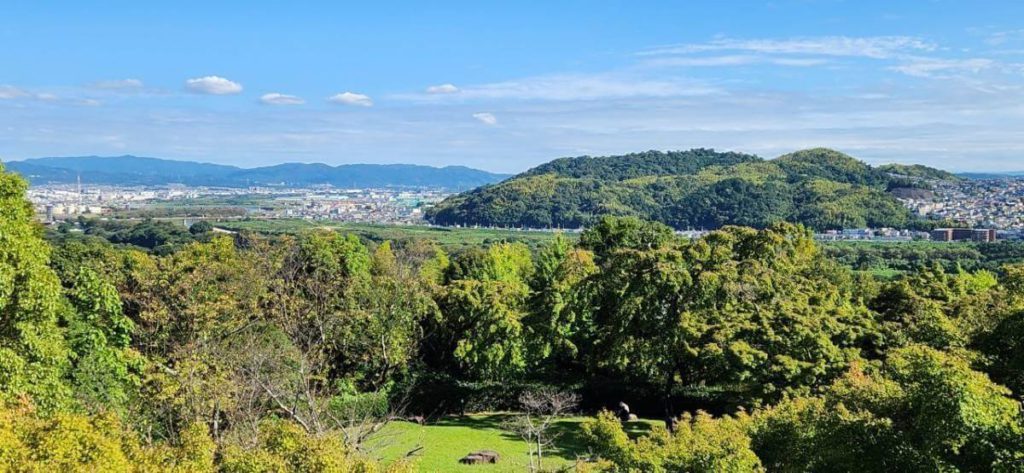
◆Underground Jewelry Box / South Wing
The “Underground Jewelry Box,” designed by the architect, Tadao Ando (安藤忠雄), was an innovative addition to the museum when it was opened to the public. As the name suggests, the cylinder-shaped gallery was built underground, with only the roof visible from above, which allows the natural surroundings to remain undisturbed. Walking down the long concrete staircase from the main building and stepping inside the subterranean gallery, you feel as if you are being invited into a different world, where large-scale works of art await you.
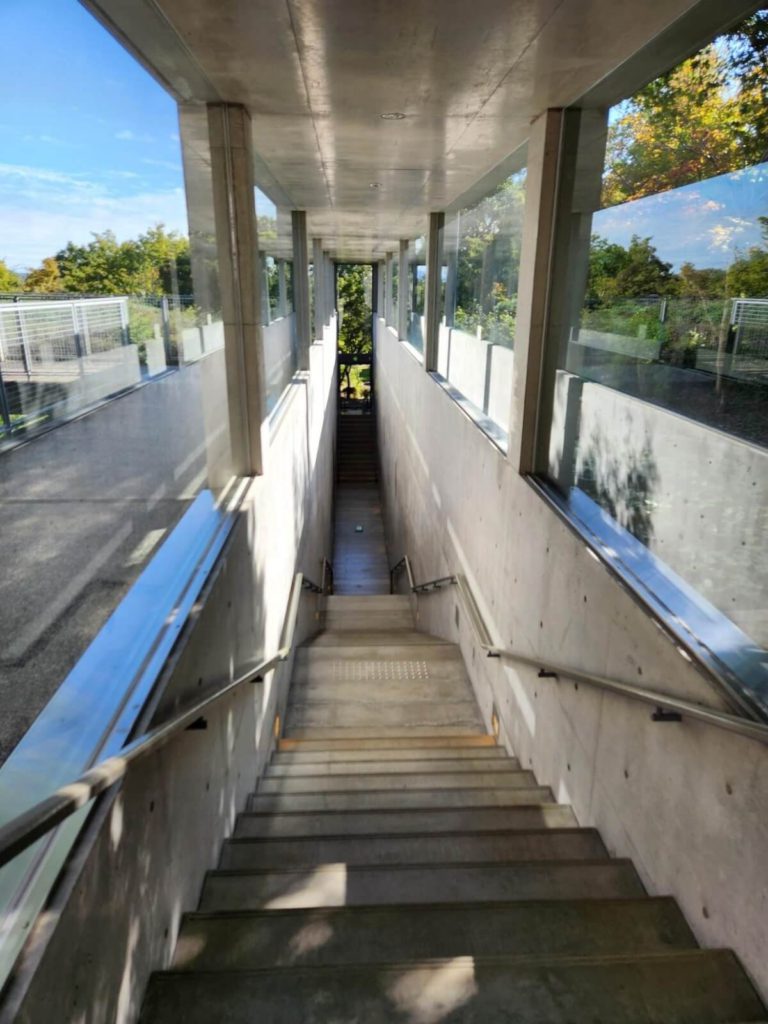
◆Dream Box / North Wing

The “Dream Box,” also designed by Tadao Ando, is the newest addition to the museum and was completed in 2012. Large windows flood the building with natural light, and its open, airy design connects the space with the surrounding greenery and landscape. The Dream Box contains exhibition galleries that host rotating exhibitions, and its simple yet striking design contrasts sharply with the historic Ōyamazaki Villa.
Art Collection
The museum houses an impressive collection of modern Western and Japanese art. In particular, several pieces of the “Water Lilies” series by Claude Monet are meticulously preserved. It also has a special focus on craftsmanship and mingei (Japanese folk crafts), featuring ceramic works, sculpture, and some arts and crafts. Photography is not permitted inside the museum. Click on the link below to view some of the collections.
https://www.asahigroup-oyamazaki.com/english/collection
Surrounding Nature
The beauty of the Ōyamazaki Villa Museum of Art lies not only in the preciousness of the buildings and the works of art it owns but also in the beautiful surroundings. There is an abundance of greenery, a treasure trove of rare birds, clean air, and carefully maintained gardens with ponds and blooming water lilies in June.
Although there is an admission fee to the Ōyamazaki Villa Museum itself, the surrounding garden is free and open to the public, making it a hidden gem for viewing flowers in each season and autumn foliage.
Note: Admission fees vary depending on the current exhibition.
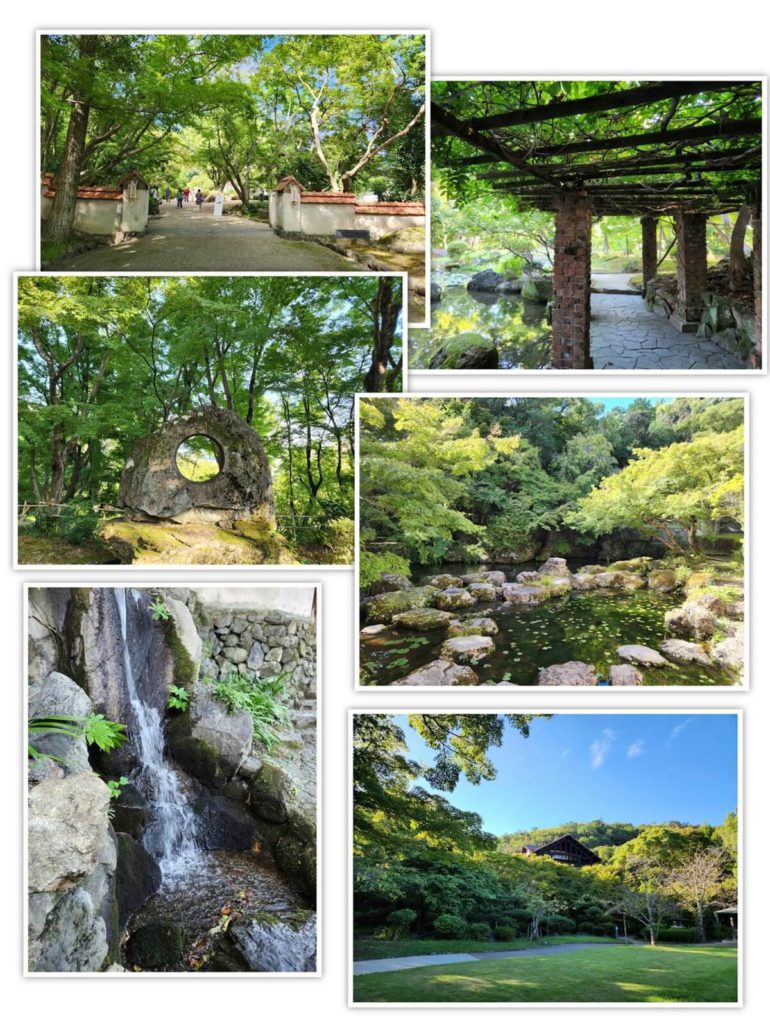
National Tangible Cultural Properties
There are six national tangible cultural properties (including the Main Building) on the grounds of the Ōyamazaki Villa Museum.
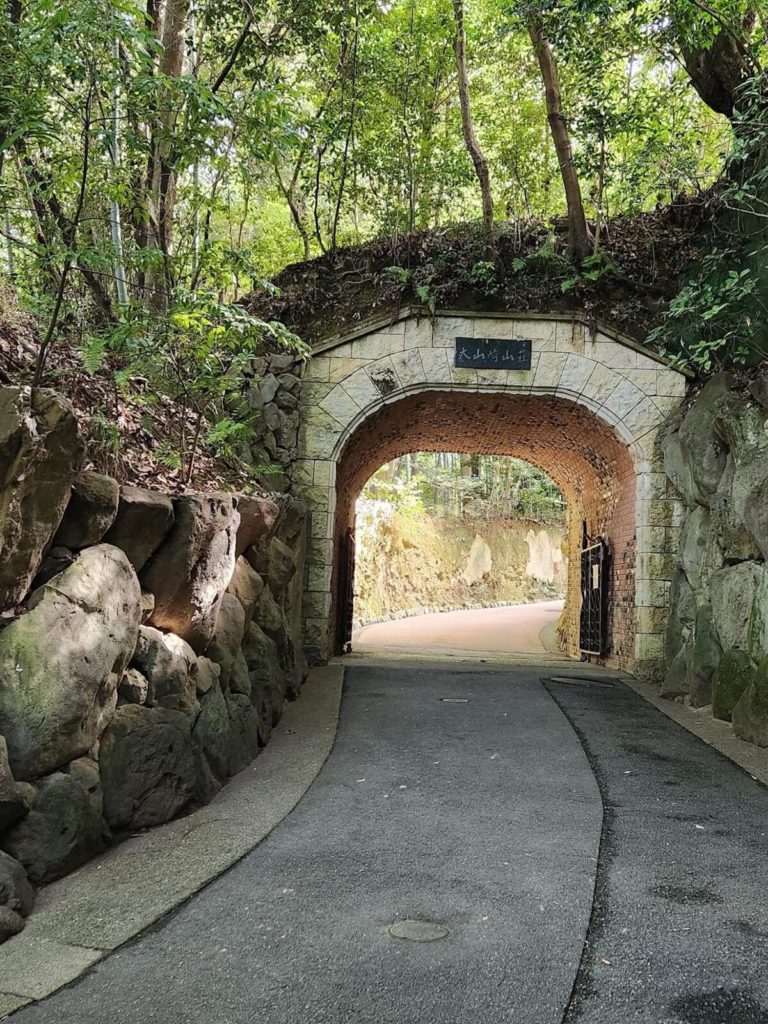
This small tunnel called Rokan-do (琅玕洞) is positioned as an entrance. You will enter the museum grounds by passing through it. The shuttle bus will bring you here.
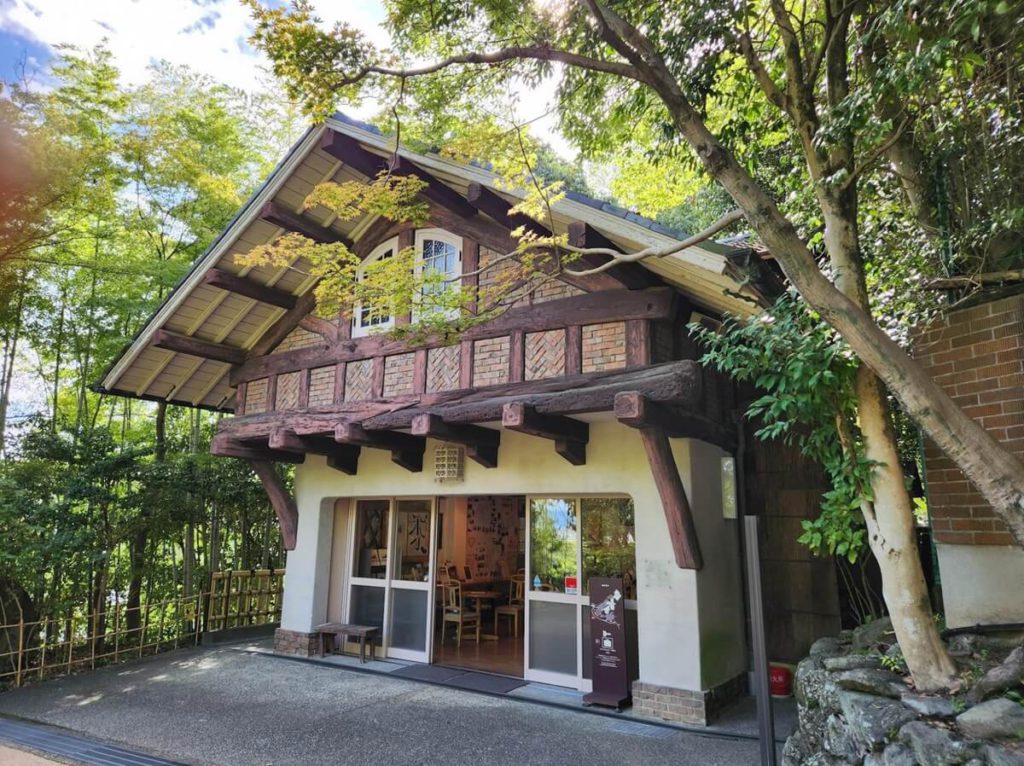
Shortly after passing through the tunnel, you will see this house. This was originally a garage but is now used as a rest house. It was also built with a half-timber construction method. It is equipped with coin lockers, vending machines, and toilets. Backpacks are not allowed in the main building, so it is better to leave your luggage here.
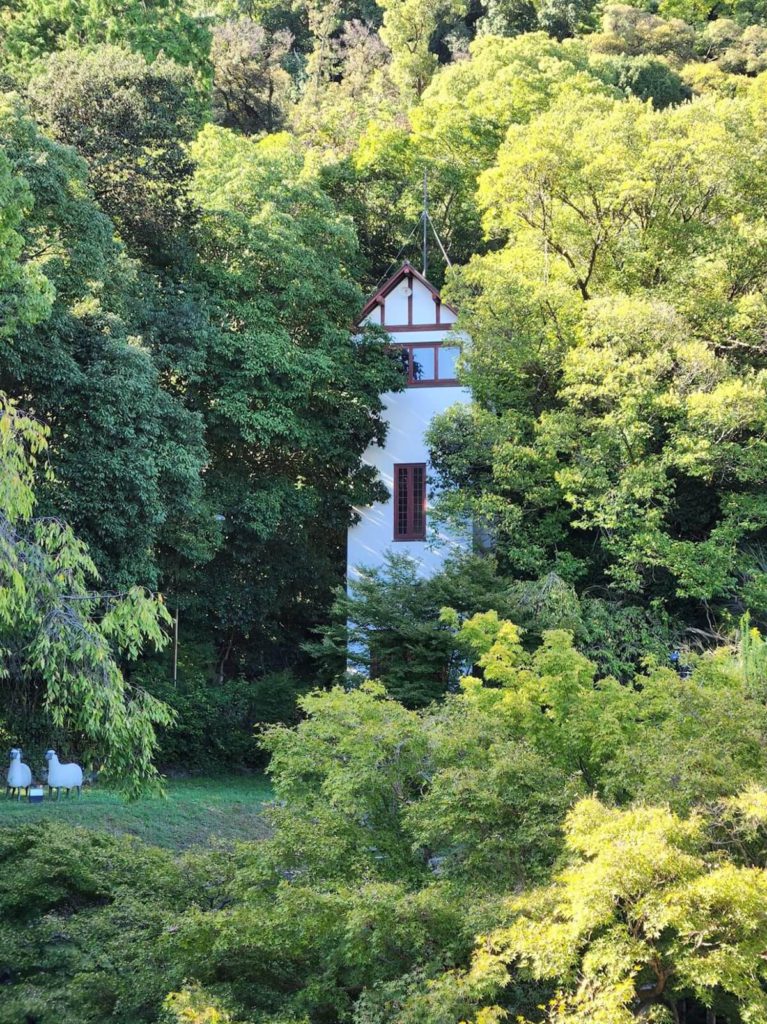
This tower, called Seika-ro (栖霞楼), the first erected on the grounds, was used by Shotaro Kaga to supervise the villa’s construction. Unfortunately, it is currently off-limits.
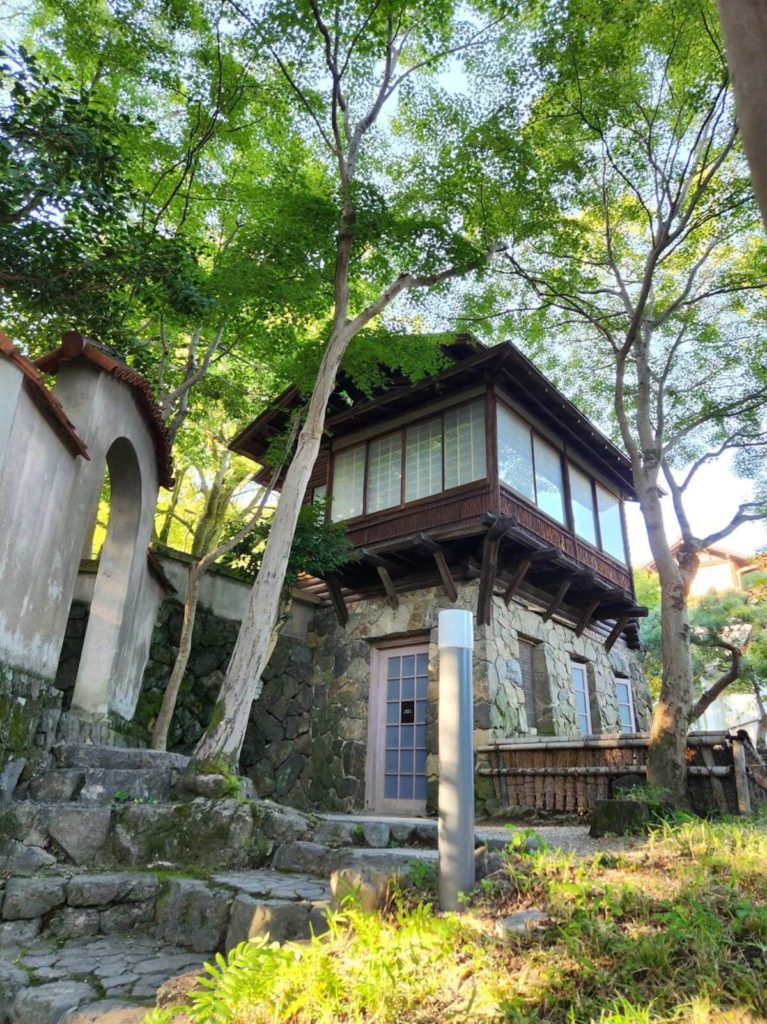
There are two teahouses called Tochinoki-chaya (橡の木茶屋) and Saigetsu-an (彩月庵), which are both for table-and-chair style tea ceremonies and are not usually open to the public.
Conclusion
I visited the Villa Museum for the first time in many years, having heard that it had been refurbished last year (2023). Personally, I was fascinated by the stylishness of the buildings and the gorgeous furnishings more than the artwork. I spent a lovely and relaxing afternoon with delicious sweets in the cozy upstairs café. It was also interesting to see the bathtub in the bathroom and other decor of the time, as the building was originally a private villa. On the day I visited, there was an exhibition of works by the famous American artist, Andrew Wyeth, which attracted many visitors. When I went down to the garden, there were few people around, and it was very relaxing to walk through the well-maintained lush green garden and listen to the birds singing. I was convinced that the autumn foliage season would create picturesque scenery. Please check the link below.
https://www.asahigroup-oyamazaki.com/english/about/garden
https://www.asahigroup-oyamazaki.com/english
Lives in Takatsuki city, Osaka. Has been engaged in English for work and fun for years.

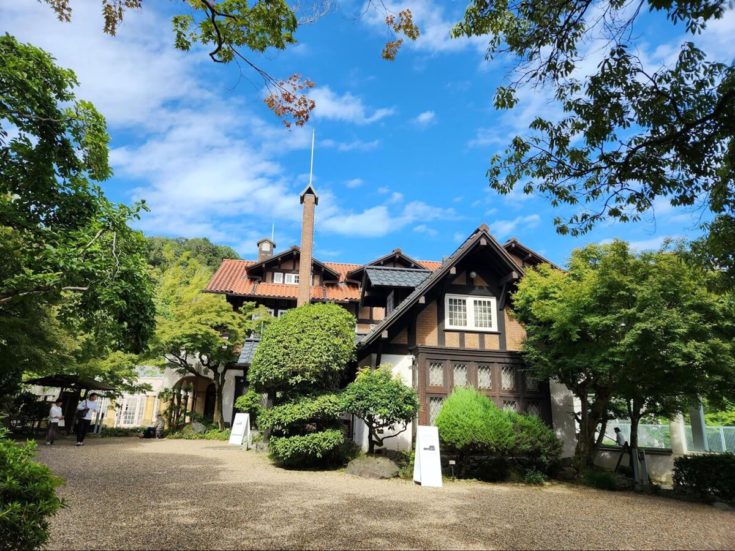

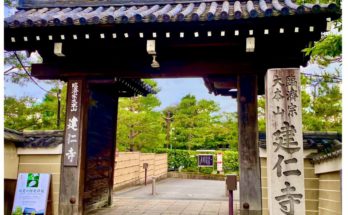
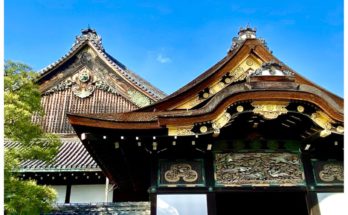
 HTJ has a YouTube page! Check it out
HTJ has a YouTube page! Check it out
Dear Mami,
Thank you for writing this wonderful article! Your photos are excellent too!
I want to visit this hidden gem the next time I visit Kyoto. Will you be my tour guide?
Best regards,
Manning
Thank you for reading and leaving a comment. I’m delighted to share this museum with you. I’m looking forward to being your guide when you visit Kyoto.